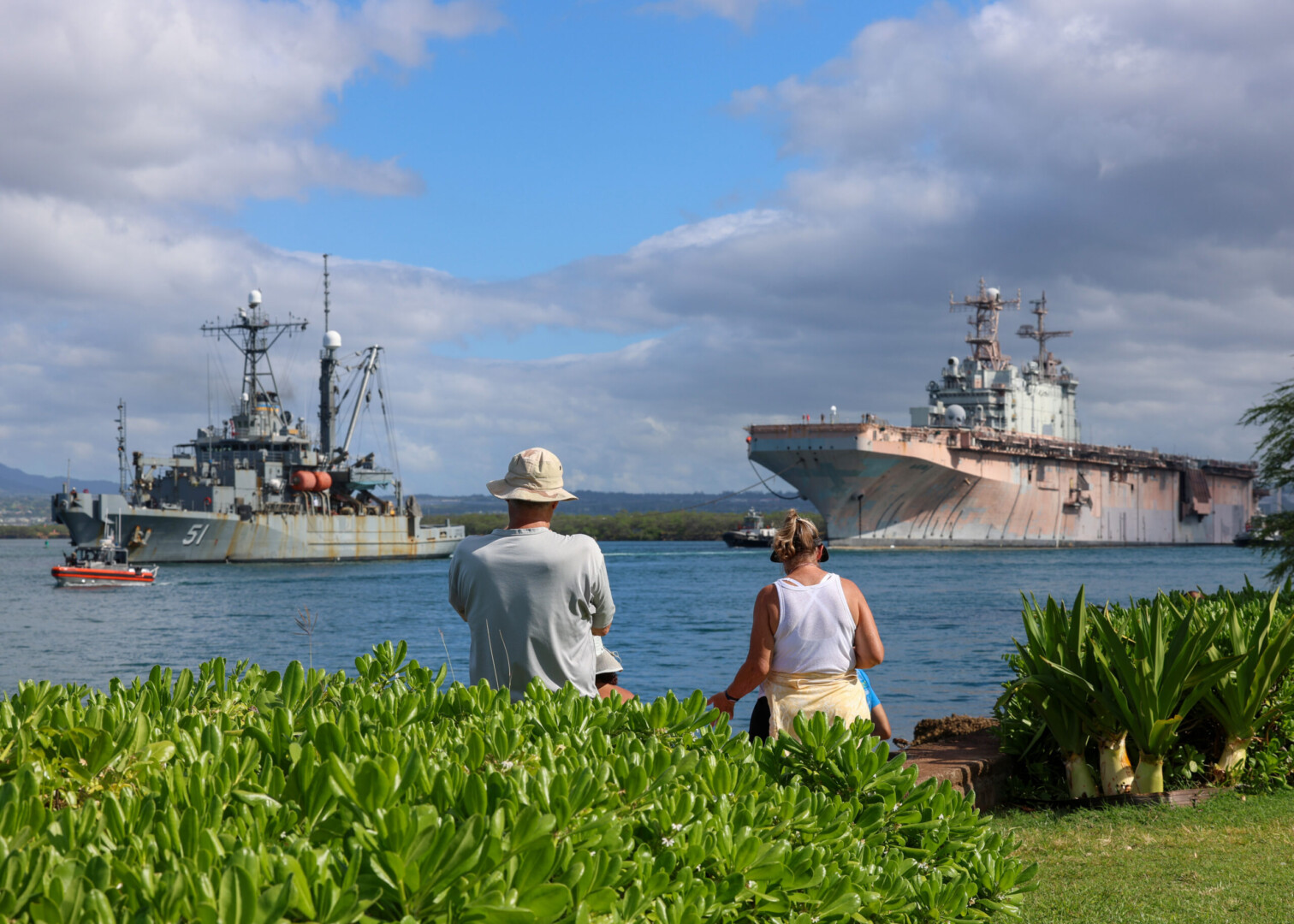Australia
HMAS Sydney Successfully Fires Naval Strike Missile During RIMPAC 2024

PEARL HARBOR, Hawaii (July 22, 2024) – The Royal Australian Navy destroyer HMAS Sydney (DDG-42) successfully fired a Naval Strike Missile (NSM) and sank the decommissioned amphibious assault ship USS Tarawa (LHA-1) during the biennial Rim of the Pacific (RIMPAC) 2024 exercise. This event marked a significant achievement in Australia’s defense capabilities and strategic planning.
The Australian Department of Defense highlighted the SINKEX (sinking exercise) as a “major milestone” for the National Defense Strategy, which aims to enhance the country’s defensive and offensive capabilities.
Significance of the Event
“The National Defence Strategy outlined a strategy of denial as the cornerstone of Defence planning to prevent any potential adversary from succeeding in coercing Australia through force, while supporting regional security and prosperity,” said Pat Conroy, Australian Minister for Defence Industry.
Vice Adm. Mark Hammond, head of the Royal Australian Navy (RAN), emphasized the importance of the NSM system in increasing the lethality and survivability of Australia’s surface fleet. “Naval Strike Missile is a key capability for the lethality enhancement and survivability of our ships and enables our ability to hold an adversary at risk at greater range,” Hammond stated.
Procurement and Implementation
The Australian government selected the NSM to replace the Harpoon missile system on its Hobart-class destroyers and Anzac-class frigates in April 2022, with a contract signed in January 2023. During a Senate Estimates hearing on June 5, Vice Adm. Hammond revealed that the NSM system installation on some RAN ships had already begun and that the Tomahawk cruise missile would enter service by the end of the year. In August 2023, Australia announced the procurement of over 200 Tomahawk cruise missiles for its Hobart-class destroyers.
Exercise Details and Coordination
USNS Grasp (T-ARS 51), a rescue and salvage ship, transported the former USS Tarawa and USS Dubuque (LPD-8) to the designated target area for the SINKEX. The exercise underscores the collaborative efforts between the U.S. and Australian navies in enhancing operational readiness and interoperability.
CARAT Thailand 2024
Sattahip, Thailand (July 20, 2024) – The U.S. Navy, the Royal Thai Navy, and the Republic of Singapore Navy commenced the Cooperation Afloat Readiness and Training (CARAT) Thailand 2024 exercise. This trilateral exercise aims to enhance regional security, stability, and operational capabilities among the participating navies.
Rear Adm. Joaquin Martinez de Pinillos, the reserve vice commander of U.S. 7th Fleet, emphasized the importance of regional cooperation. “When like-minded navies cooperate and work together multi-laterally, together we have an outsized impact on regional security, stability, and prosperity,” he said.
Exercise Activities
The Independence-variant littoral combat ship USS Gabrielle Giffords (LCS 10) with an embarked MH-60S Seahawk helicopter will operate alongside RTN frigates HTMS Taksin (FFG 422), HTMS Bhumibol Adulyadej (FFG 471), HTMS Chakri Naruebet (FFG 911), and RSN RSS Valiant (91). The at-sea phase will focus on surface action groups and anti-submarine warfare drills.
Capt. Sean Lewis, commodore of Destroyer Squadron 7, highlighted the evolving complexity of U.S.-Thai cooperation. “This exercise continues to demonstrate the depth of U.S.-Thai cooperation, evolving in complexity to enhance our navies’ operational capabilities and tactical readiness in response to emerging challenges,” he said.
Commitment to Regional Stability
CARAT exercises demonstrate the U.S. commitment to regional allies and partners, ensuring a free and open Indo-Pacific. The participation of Thailand and Singapore in CARAT 2024 underscores the dedication to fostering regional peace, prosperity, and stability.
These collaborative efforts during RIMPAC 2024 and CARAT Thailand 2024 exemplify the strong international partnerships and commitment to maintaining security and stability in the Indo-Pacific region.








